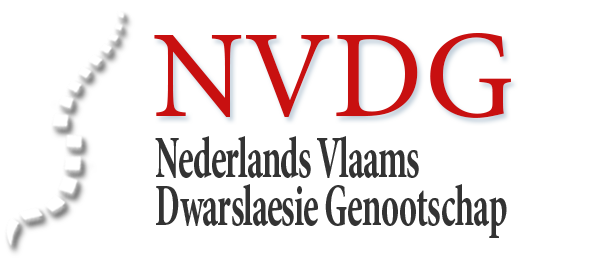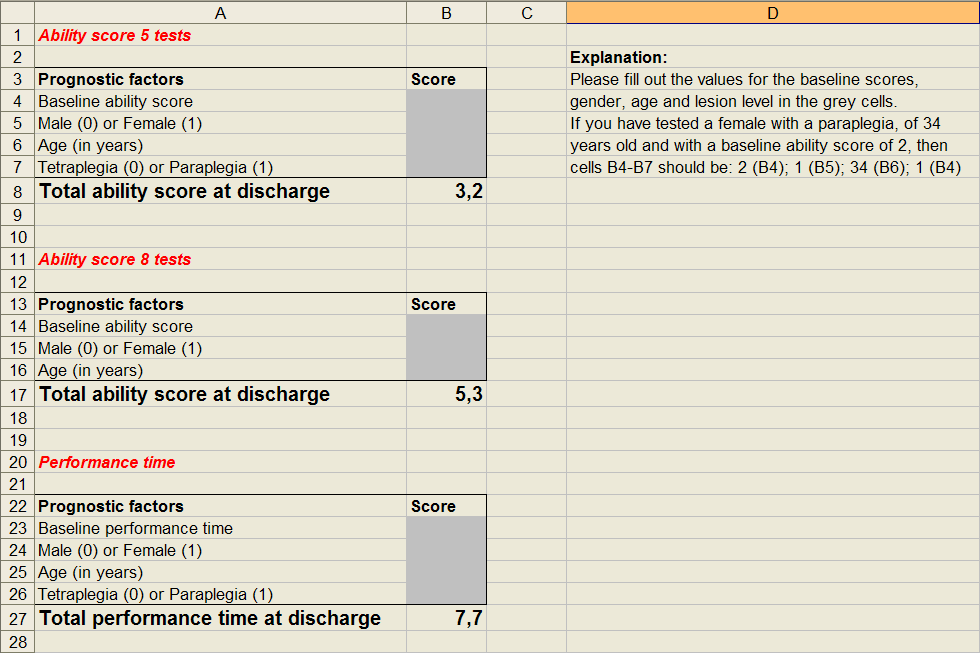Patientmonitoring in SCI rehabilitation
- Lucas van der Woude, PhD (Project leader)
- Marcel Post, PhD (Project leader)
- Sonja de Groot, PhD (Project coordinator)
Introduction
Currently we are working on the implementation of some of the tests in the SCI rehabilitation in order to objectively evaluate individual progress and help to improve the quality of rehabilitation. Results of the current Umbrella Project serve as normative data. Apart from patient monitoring, data will serve to enlarge the present database. More subjects are needed to calculate valid normative values of, for example, physical capacity of subjects with different lesion levels or completeness at several moments during rehabilitation. You can download the proposal Patient monitoring, or the results of the first evaluation or second evaluation (all in Dutch) by clicking on the links.
Purpose
Over the past 10 years a Dutch multi-center study ‘Restoration of mobility in spinal cord injury (SCI) rehabilitation’ investigated the development and outcome of the rehabilitation process of people with a SCI. The next step was to implement part of the developed test battery in rehabilitation to systematically monitor functional progress of the patients. These data will be used during team communications to optimize individual rehabilitation strategy and the SCI rehabilitation program in general.
Methods
The project is set up in a strong collaboration between physicians and paramedical research assistants of 8 rehabilitation centers with a specialized SCI unit and with researchers in the SCI field. It is approved by the Dutch-Flemish Society of Paraplegia. Patients will be measured at least three times during clinical rehabilitation (start, 3 months later, discharge). The implemented tests measure the wheelchair skills, physical capacity, hand functioning, lung functioning, muscle strength, and independence in daily living. For good interpretation of the test results and for formulating rehabilitation goals, reference data and predictive models were developed using the data of the multi-center study. For example, an Excel file is available to predict the wheelchair skills at discharge of inpatient rehabilitation from baseline wheelchair skills (at the start of active rehabilitation), gender, age and lesion level. By clicking on the figure below, you can download the Excel file and try it.
Discussion
Clear manuals and test forms were developed for standardization of the tests, which is required for comparison of results within and between patients. Continued schooling and discussions are required to support and to optimally interpret the individual test results in the clinical context. A process and effect evaluation were performed to investigate the stimulating and hampering factors of such an implementation project.
You can download the manual, test forms and reference graphs (all in Dutch) for each test here:
- Rolstoelvaardigheden
- Spirometrie
- Spierkracht
- Handfunctie
- Inspanningstest
Publications
- Patiëntmonitoring tijdens de dwarslaesierevalidatie: het interpreteren van testgegevens. Groot S de, Post M, Niezen A, Rijken H, Woldring F, Postma K, Valent L, Luthart P, Schuitemaker M, Woude L van der. Revalidata 2007; 29(135):15-20.
- Meten op de werkvloer: klinimetrie in de dwarslaesierevalidatie. Groot S de, Post M, Asbeck F van, Woude L van der. Revalidata 2008 Feb 1;30(141):12-4.
- Patiëntmonitoring: meetbaar beter. Groot S de, Post M, Asbeck F van, Woude L van der. Revalidatie Magazine 2008 Feb 1;14(1):10.
- Effect and process evaluation of implementing standardized tests to monitor patients in spinal cord injury rehabilitation. De Groot S, Bevers GE, Post MWM, Woldring FAB, Mulder GA, and Van der Woude LHV. Disability & Rehabilitation. 2010. 32(7): 588-597.






